As parents, we often find ourselves faced with numerous questions and concerns when it comes to the health and well-being of our children. One particular issue that can elicit worry and anxiety is the puzzling occurrence of hair loss in our little ones. This enigmatic condition may manifest in various ways, leaving parents desperately searching for answers and solutions.
Unraveling the mystery behind hair loss in children necessitates delving into the intricacies of this perplexing phenomenon. From subtly thinning strands to alarming patches of baldness, these manifestations can evoke a range of emotions for parents and their children alike. With each case being unique, the underlying causes and potential solutions require careful examination and understanding.
In this comprehensive guide, we embark on a journey of exploration and discovery, seeking to shed light on the various aspects of hair loss in children. Armed with knowledge and compassion, we will navigate the nuances of this topic, equipping parents and caregivers with the tools they need to evaluate, understand, and address this perplexing issue. Join us as we traverse the intricate pathways of pediatric hair loss, offering insights, advice, and reassurance along the way.
Causes and Types of Hair Loss in Children
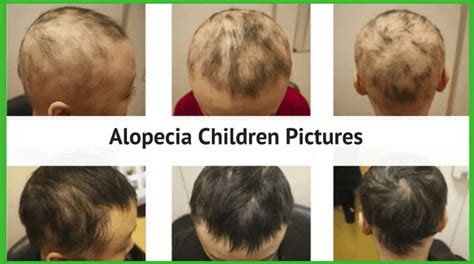
In this section, we will explore the various reasons and different types of hair loss experienced by children. Hair loss in young individuals can occur due to a multitude of factors, ranging from medical conditions to genetic predispositions.
1. Medical Conditions: Children may experience hair loss as a result of certain medical conditions, such as alopecia areata, tinea capitis, and trichotillomania. Alopecia areata is an autoimmune disorder that causes patchy hair loss, while tinea capitis is a fungal infection that affects the scalp. Trichotillomania refers to the compulsive pulling or twisting of hair, resulting in hair loss.
2. Nutritional Deficiencies: Inadequate intake of essential nutrients, such as iron, vitamins (particularly vitamin D), and minerals, can lead to hair loss in children. It is important for parents to ensure their child's diet is balanced and provides all the necessary nutrients for healthy hair growth.
3. Genetic Factors: Hair loss can also be attributed to genetic factors in some cases. Certain genetic conditions, such as androgenetic alopecia, can cause hair thinning and hair loss in children. Family history plays a crucial role in identifying if genetics are a contributing factor.
4. Stress or Emotional Factors: Emotional stress, trauma, or significant life events can sometimes trigger hair loss in children. This can be temporary and may resolve on its own with time and emotional support.
5. Hair Care Practices: Improper hair care practices, such as excessive pulling, brushing, or hairstyling, can lead to hair breakage and hair loss in children. It is important to handle a child's hair gently and avoid tight hairstyles that can cause tension on the scalp.
In conclusion, hair loss in children can have various causes and manifestations. Identifying the underlying reason is crucial for proper diagnosis and management. If you notice significant hair loss in your child, it is advisable to consult a healthcare professional who can provide appropriate guidance and treatment.
Understanding Alopecia Areata in Children
Exploring the enigmatic phenomenon of alopecia areata in children, this section aims to delve into the intricate aspects of this perplexing condition that affects the scalp. By examining the underlying factors and potential triggers, we can gain a deeper understanding of how alopecia areata manifests in children and the implications it holds for their physical and emotional well-being.
An Enigma of Hair Loss:
Alopecia areata, a condition characterized by sudden hair loss, often manifests in children, perplexing both parents and medical professionals alike. This enigma can instill feelings of unease, as the cause and progression of the condition remain shrouded in mystery. However, through research and scientific endeavors, a clearer glimpse into the intricacies of alopecia areata in children is beginning to emerge.
Unraveling the Triggers:
While the exact cause of alopecia areata in children is yet to be fully understood, researchers have identified a combination of genetic, immunological, and environmental factors that may contribute to its development. Distinct genetic markers have been found in individuals with alopecia areata, suggesting a potential hereditary component. Moreover, the immune system's response to these genetic factors and external triggers is believed to play a crucial role in the onset of the condition.
Impact on Physical and Emotional Well-being:
The effects of alopecia areata extend beyond the physical realm, often exerting a profound emotional impact on children. Hair loss may lead to altered self-perception, social withdrawal, and a decline in self-esteem, making it crucial to address not only the physical symptoms but also the emotional well-being of the child. Through compassion, support, and education, parents, caregivers, and healthcare professionals can empower children to navigate the challenges posed by alopecia areata with resilience and confidence.
Seeking Treatment and Support:
While there is currently no cure for alopecia areata, there are various treatment options available to manage its symptoms and potentially stimulate hair regrowth in children. From topical medications and corticosteroid injections to phototherapy and psychological support, a multidisciplinary approach can help children cope with the challenges of alopecia areata and regain a sense of control over their lives.
Conclusion:
Understanding alopecia areata in children requires a comprehensive exploration of the underlying factors, triggers, and emotional implications. By unraveling the intricacies of this perplexing condition, we can pave the way for effective treatment, support, and ultimately enhance the overall well-being of children affected by alopecia areata.
Medical Conditions That May Lead to Hair Loss in Children
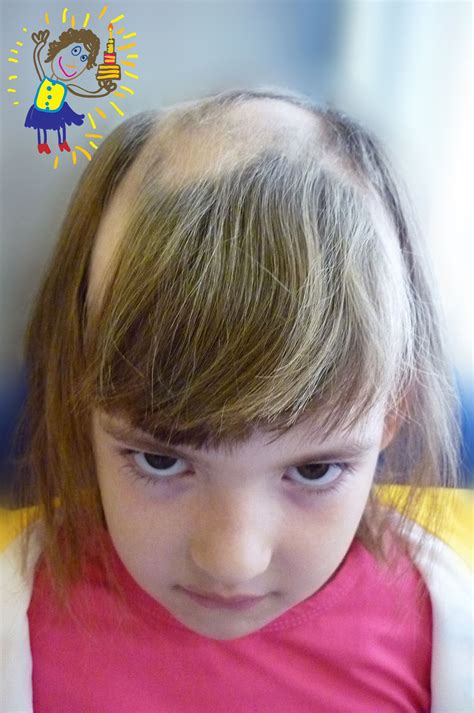
When it comes to the well-being of children, many parents can become concerned when they notice a significant amount of hair loss in their child's scalp.
It is important to be aware that there are several medical conditions that could potentially contribute to hair loss in children. While hair loss is not an uncommon occurrence, it is important to understand the underlying causes and seek appropriate medical attention if necessary.
Alopecia areata is one such condition that can cause hair loss in children. This condition is characterized by the sudden loss of hair in round patches, which can be distressing for both the child and their parents. It occurs when the immune system mistakenly attacks hair follicles, leading to hair loss.
Tinea capitis, also known as ringworm of the scalp, is another condition that can result in hair loss in children. It is a fungal infection that affects the scalp and hair shafts, leading to hair breakage and loss. It is important to treat tinea capitis promptly to prevent further spread of the infection and minimize hair loss.
Trichotillomania is a psychological disorder that can cause children to compulsively pull out their own hair, leading to noticeable patches of hair loss. This condition often requires psychological intervention to address the underlying causes and prevent further hair loss.
Telogen effluvium is a condition that can occur as a result of a variety of factors, such as illness, stress, or medication. It causes a disruption in the hair growth cycle, leading to excessive shedding and temporary hair loss. Although this condition is usually temporary, it is important to identify and address the underlying factors that may be contributing to it.
In conclusion, there are various medical conditions that can cause hair loss in children, ranging from autoimmune disorders to fungal infections. It is crucial for parents to be aware of these conditions and seek appropriate medical advice if they notice significant hair loss in their child. By promptly addressing the underlying causes, parents can help their children maintain healthy hair and overall well-being.
Genetic Factors and Hair Loss in Children
Understanding the influence of genetic factors on hair loss in children is crucial in unraveling the complexities of this phenomenon.
The intricate interplay between hereditary traits and hair loss in pediatric cases has been a subject of significant scientific inquiry. By exploring the genetic factors at play, researchers aim to shed light on the underlying mechanisms that contribute to hair loss in children.
Genetic predisposition to hair loss in children can result from inheritable genes passed down through bloodlines. These genes, which influence the growth and health of hair follicles, can play a pivotal role in determining the susceptibility to hair loss. While external factors may exacerbate the condition, genetic factors provide a foundational understanding of why certain children may be more prone to experiencing hair loss.
Research efforts often focus on identifying specific genetic markers associated with hair loss in children. By examining these markers, scientists hope to uncover clues about the mechanisms behind pediatric hair loss and develop targeted intervention strategies. Genetic studies have shown promise in discerning patterns and variations that can lead to a deeper comprehension of the condition's origins.
However, it is essential to recognize that genetic factors are just one piece of the puzzle. While some children may have an inherited predisposition to hair loss, environmental factors such as stress, nutritional deficiencies, and underlying medical conditions can also contribute to hair loss. A comprehensive approach that considers both genetic and environmental factors is crucial for understanding and addressing hair loss in children effectively.
In conclusion, genetic factors play a significant role in hair loss among children. Researchers endeavor to uncover specific genetic markers associated with this condition, with the ultimate aim of developing targeted intervention strategies. However, it is vital to recognize that genetic factors are intertwined with environmental influences, necessitating a holistic approach to comprehending and managing pediatric hair loss.
Psychological Impact of Hair Loss on Children
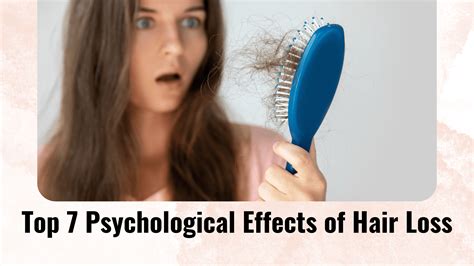
Hair loss in children can have a profound psychological effect on their well-being, influencing their self-esteem and overall mental health. The emotional impact of losing hair at a young age extends beyond physical appearance, as it can significantly affect a child's social interactions, relationships, and sense of identity.
The experience of hair loss may cause children to experience feelings of embarrassment, shame, and insecurity, leading to decreased self-confidence and withdrawal from social activities. They may develop a negative self-image, feeling different or less attractive compared to their peers. These negative emotions can impact various aspects of their lives, including academic performance and participation in extracurricular activities.
Furthermore, the psychological impact of hair loss on children often extends to their relationships with others. They may fear being judged or teased by their classmates, making it difficult to form meaningful connections with peers. This can lead to isolation and loneliness, exacerbating their emotional distress.
It is essential for caregivers, parents, and healthcare professionals to acknowledge and address the psychological impact of hair loss on children. Providing emotional support and fostering a positive self-image are crucial in helping children navigate through these challenges. Open communication, education, and professional counseling can aid in developing coping strategies and building resilience.
By recognizing and addressing the psychological impact of hair loss on children, we can empower them to embrace their uniqueness and develop a sense of self-worth that extends beyond physical appearance. Understanding their experiences and providing a nurturing environment allows children to thrive and live fulfilling lives, despite the challenges they may face.
Detailed Hair Care Routine for Children Experiencing Hair Thinning
In this section, we will delve into an in-depth hair care routine specifically tailored for young individuals who are dealing with hair loss, focusing on ensuring proper scalp health and promoting hair growth. Providing compassionate and effective care for children facing these challenges is essential for their overall well-being and self-esteem.
1. Gentle Cleansing: Using a mild, sulfate-free shampoo, gently cleanse the scalp to remove excess oils, dirt, and any product buildup. It is important to avoid vigorous scrubbing or using hot water, as these can further damage fragile hair.
2. Nourishing Conditioner: Apply a nourishing conditioner to the hair, focusing mainly on the lengths and ends. Leave it on for the recommended time before rinsing thoroughly. Opt for conditioners that contain ingredients such as biotin, keratin, or panthenol to help strengthen and repair the hair.
3. Moisturizing Hair Masks: Treat the hair to regular moisturizing masks to provide deep hydration and replenish essential nutrients. Look for masks enriched with ingredients like coconut oil, argan oil, or shea butter to improve hair elasticity and minimize breakage.
4. Scalp Massage: Incorporate a gentle scalp massage into the hair care routine to stimulate blood circulation and promote a healthy scalp environment. Using fingertips, apply light pressure in circular motions, focusing on areas that may need extra attention.
5. Protective Styling: Opt for gentle hairstyles that minimize excessive pulling or tugging on the hair, such as loose braids or ponytails. Avoid tight elastics or hairstyles that require excessive heat styling, as these can further weaken the hair strands.
6. Nutrient-Rich Diet: Emphasize a well-balanced diet that includes essential nutrients for healthy hair growth, such as protein, vitamins (especially A, C, and E), and minerals like iron and zinc. Encourage the consumption of foods like fish, eggs, fruits, vegetables, and whole grains.
7. Regular Trimming: Schedule regular trims to eliminate split ends and prevent damage from traveling up the hair shaft. Trimming the hair regularly can help maintain a neat appearance while promoting healthy hair growth.
8. Avoid Harsh Chemicals: Minimize the use of hair products that contain harsh chemicals, alcohol, or artificial fragrances. These can be harsh on delicate hair, causing further damage and irritation to the scalp.
9. Consult a Professional: If you notice excessive hair loss or have concerns about your child's hair thinning, it is advisable to consult a pediatric dermatologist or a trichologist. They can evaluate the underlying causes and provide personalized guidance for managing and treating the condition.
By incorporating this detailed hair care routine into your child's daily regimen, you can help support their hair health and enhance their confidence as they navigate through the challenges of hair loss.
Treatment Options for Juvenile Alopecia
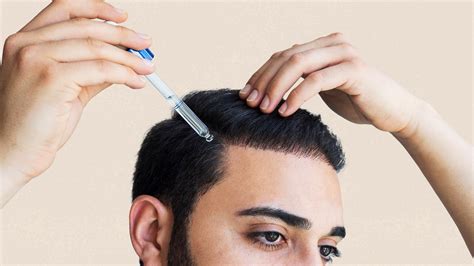
Addressing hair loss in children requires a comprehensive approach that focuses on both the physical and emotional well-being of the child. There are various treatment options available that can help manage and potentially promote hair regrowth, allowing children to regain their confidence and quality of life.
1. Medication: In certain cases, doctors may prescribe medication to stimulate hair growth or suppress the immune system, depending on the underlying cause of hair loss. These medications can be effective in treating specific types of alopecia in children.
2. Topical Treatments: Topical treatments, such as ointments or creams, can be applied directly to the scalp to stimulate hair growth. These treatments are often used for localized hair loss or mild cases of alopecia.
3. Nutritional Supplements: A well-balanced diet plays a crucial role in hair health. In some cases, adding specific nutritional supplements, such as vitamins or minerals, to a child's diet may promote hair regrowth and overall hair health.
4. Laser Therapy: Low-level laser therapy can be used to stimulate hair follicles and promote hair growth. This non-invasive treatment option has shown promising results in children with certain types of alopecia.
5. Wigs and Hairpieces: For children experiencing significant hair loss, wigs or hairpieces can provide temporary solutions to improve their appearance and self-esteem. It is important to choose high-quality and properly fitted options to ensure comfort and natural-looking results.
6. Emotional Support: Hair loss in children can have a significant emotional impact. Providing emotional support and counseling can help children cope with the psychological and social challenges associated with hair loss. It is essential to create a supportive environment for the child and their family.
It is important to consult with a healthcare professional to determine the most suitable treatment options for a child experiencing hair loss. Each case is unique, and a personalized approach is necessary to address the specific underlying causes and needs of the child.
Coping Strategies for Parents and Children Dealing with Hair Loss
Discovering that your child is experiencing hair loss can be a challenging experience for both parents and the child. This section explores various coping strategies to help parents and children navigate this difficult situation.
1. Open Communication: Maintaining open and honest communication with your child is crucial when dealing with hair loss. Encourage them to express their feelings and concerns, and be prepared to actively listen and provide reassurance. This will foster a sense of trust and understanding, helping them cope better with their hair loss.
2. Seeking Support: It is important for parents to seek support from health professionals, support groups, or counseling services specialized in child hair loss. These resources can provide valuable guidance, information, and emotional support for both parents and children.
3. Educating Yourself: Understanding the causes and treatment options for hair loss in children can help parents make informed decisions and provide the best support for their child. Research information from reputable sources and consult healthcare professionals to gain comprehensive knowledge about the condition.
4. Encouraging Self-Expression: Encourage your child to express themselves creatively through hairstyles, headscarves, or hats that they feel comfortable wearing. This allows them to maintain their individuality and boosts their self-confidence during the hair loss journey.
5. Fostering a Positive Body Image: Emphasize the importance of inner beauty and self-acceptance, reminding your child that their worth is not determined by their physical appearance. Encourage them to focus on their unique qualities, achievements, and talents, fostering a positive body image irrespective of hair loss.
6. Empowering Others: Engage your child in activities that empower them and enable them to make a positive impact on others. This can boost their self-esteem and help them see beyond their hair loss, focusing on their abilities to contribute to society.
By implementing these coping strategies, parents and children can navigate the challenges of hair loss with resilience, support, and emotional strength. Remember, every child is unique, and their journey through hair loss will be as well. With love, understanding, and the right coping strategies, parents and children can find strength and acceptance in this journey.
Seeking Professional Help for Hair Loss in Children
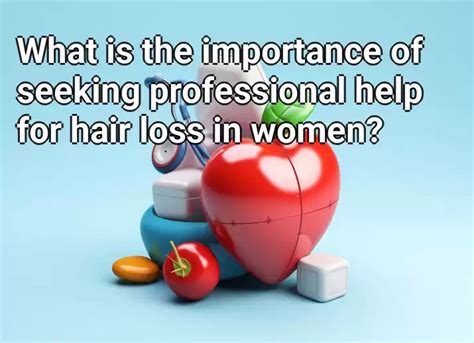
When it comes to hair loss in children, it is essential to recognize the signs and know when it is time to seek professional help. Hair loss can be a distressing experience for both the child and their parents or guardians. Understanding the potential underlying causes and knowing when to involve a healthcare professional can help ensure proper diagnosis and effective treatment.
Recognizing the signs
It is important to pay attention to any changes in your child's hair, whether it is excessive shedding, thinning, or bald patches. These signs may indicate an underlying issue that requires medical attention. Additionally, consider assessing other accompanying symptoms that your child might be experiencing, such as itching, redness, or swelling on the scalp.
When to involve a healthcare professional
If you notice any concerning signs of hair loss in your child, it is advisable to seek an appointment with a healthcare professional. They will be able to assess the situation, evaluate possible causes, and provide appropriate guidance and treatment options. It is important not to delay seeking professional help as early intervention can be crucial in managing and resolving hair loss in children.
Medical conditions and treatments
There are various medical conditions that can contribute to hair loss in children, including fungal infections, alopecia areata, traction alopecia, and certain autoimmune diseases. A healthcare professional can conduct a thorough examination and, if necessary, order diagnostic tests to determine the underlying cause. Based on the diagnosis, they can recommend suitable treatments, which may include medications, topical treatments, or lifestyle changes.
The emotional impact
It is essential to address the emotional impact that hair loss can have on a child. Hair loss may affect their self-esteem and lead to feelings of embarrassment or insecurity. Parents and guardians should offer support and reassurance during this time, understanding that seeking professional help is an important step towards finding a solution. Encouraging open communication and involving the child in decisions regarding their hair care can also help them feel empowered.
Remember, timely intervention and seeking professional help can play a significant role in managing and treating hair loss in children. Stay vigilant and consult a healthcare professional if you have any concerns about your child's hair health.
FAQ
Is it normal for a child to lose hair on their head?
Yes, it is normal for children to experience hair loss on their heads. This can happen due to a variety of reasons, including natural growth cycles, tight hairstyles, or even medical conditions. It is important to consult with a healthcare professional to determine the cause of the hair loss.
What are the common reasons for a child losing hair on their head?
There can be several common reasons for a child losing hair on their head. Some possibilities include alopecia areata, a condition where the immune system attacks the hair follicles, fungal infections on the scalp, excessive stress or anxiety, nutritional deficiencies, or even hair care practices such as excessive brushing or the use of harsh chemicals. A doctor should be consulted to identify the specific cause.
How can I prevent my child from losing hair?
To prevent hair loss in children, it is important to maintain a healthy lifestyle, provide a balanced diet rich in vitamins and minerals, and ensure their hair is not subjected to excessive pulling or friction from tight hairstyles or hair accessories. Regularly washing and conditioning the hair, avoiding harsh chemicals, and minimizing heat styling can also help prevent hair loss.
When should I be concerned about my child losing hair?
You should be concerned about your child losing hair if it is accompanied by other symptoms such as itching, redness, or pain on the scalp, sudden patches of baldness, or if the hair loss is severe and persistent. In such cases, it is recommended to consult a healthcare professional to determine the underlying cause and receive appropriate treatment.
Can hair loss in children be permanent?
Hair loss in children can sometimes be permanent, depending on the underlying cause. Conditions such as alopecia areata, which is an autoimmune disorder, can result in permanent hair loss. However, in many cases, especially those caused by temporary factors like nutritional deficiencies or hair care practices, the hair can eventually grow back with proper treatment and care.
Why is my child losing hair on their head?
There can be several reasons why a child may be losing hair on their head. It could be due to a medical condition such as alopecia areata, where the immune system mistakenly attacks the hair follicles, resulting in hair loss. Other possible causes include nutritional deficiencies, fungal infections, certain medications, or excessive pulling or rubbing of the hair.
Is hair loss in children a cause for concern?
Hair loss in children is not uncommon and can often be temporary. However, it is important to consult a healthcare professional to determine the underlying cause and rule out any serious medical conditions. The healthcare professional will be able to provide a proper diagnosis and recommend appropriate treatment options if necessary.




